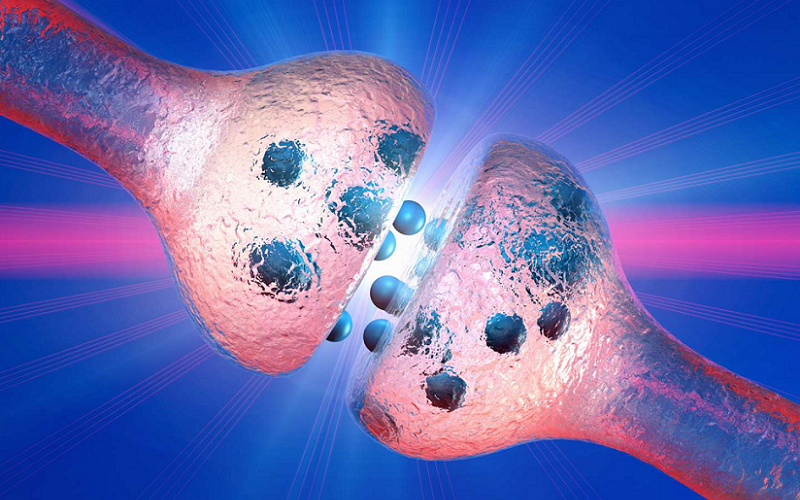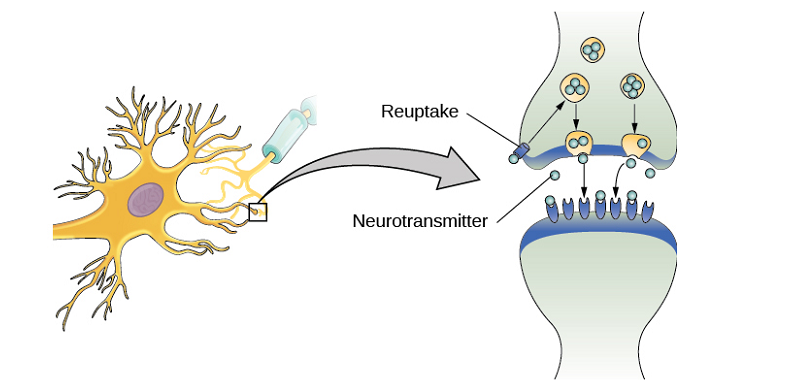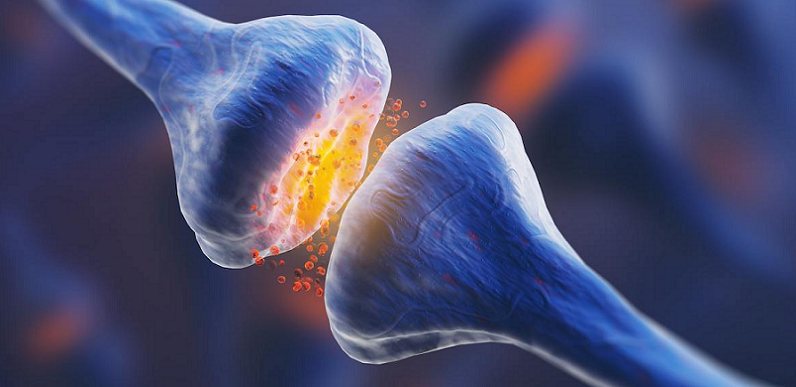
In the intricate dance of brain function, neurotransmitters play the lead role, orchestrating a complex interplay of signals that govern our thoughts, feelings, and actions. At the heart of this neural symphony lies a process fundamental yet often overlooked: neurotransmitter reuptake. Here we go beyond the basics to unravel the sophisticated mechanisms of neurotransmitter reuptake and its pivotal role in cognitive health. From the molecular intricacies of transporter proteins to the profound implications for neurological and psychiatric disorders, we look into the science that underpins how our brains recycle these vital chemical messengers.
Contents
- Introduction to Neurotransmitter Reuptake
- The Basics of Neurotransmitter Reuptake
- Advanced Insights into Reuptake Mechanisms
- The Role of Reuptake in Neurological and Psychiatric Disorders
- References
Introduction to Neurotransmitter Reuptake
In the vast and dynamic world of neuroscience, the study of neurotransmitters stands out as a cornerstone of understanding how our brains function and influence our behavior, emotions, and overall mental health. Neurotransmitters, the brain’s chemical messengers, traverse the synaptic gap between neurons, carrying signals that are essential for everything from the simplest reflex to the most complex thought processes. Among the critical aspects of neurotransmitter dynamics, the process known as reuptake is particularly fascinating and vital for maintaining the delicate balance of neural activity.
Definition of Neurotransmitters
Before we embark on our exploration of neurotransmitter reuptake mechanisms, it is essential to understand what neurotransmitters are and their pivotal role in the brain. Neurotransmitters are chemical substances produced by neurons that transmit signals across a synapse from one neuron to another. They can excite or inhibit neuronal activity, thus playing a crucial role in shaping our thoughts, emotions, and behavior.
Overview of Neurotransmitter Functions in the Brain
Neurotransmitters serve as the primary means of communication between neurons, enabling the brain to perform its complex functions. They are involved in everything from muscle contraction to mood regulation, influencing nearly every aspect of our physiological and psychological experience. The balance and interaction of these chemical messengers are fundamental to our cognitive health, affecting learning, memory, emotional regulation, and much more.
Brief Explanation of Reuptake and Its Importance for Cognitive Health
Reuptake is a process where neurotransmitters, after being released into the synaptic cleft and binding to receptors on the post-synaptic neuron, are taken back up into the pre-synaptic neuron. This mechanism serves as a way to terminate the signal between neurons, but it also recycles neurotransmitters for future use. Reuptake ensures that neurotransmitters do not linger in the synaptic cleft longer than necessary, maintaining the precision and timing of neural communication [1].
The efficiency and regulation of this process are crucial for cognitive functions and are implicated in various mental health disorders when dysregulated. Understanding the intricacies of neurotransmitter reuptake mechanisms opens up new avenues for appreciating how our brains work and how we can intervene in brain-related disorders to promote cognitive health and well-being.
The Basics of Neurotransmitter Reuptake
To fully appreciate the complexity and importance of neurotransmitter reuptake mechanisms, we first need to understand the foundational principles that govern this process. Reuptake is not merely a biological curiosity; it is a critical component of neural communication and plays a significant role in maintaining the balance and function of the brain’s complex networks.
Definition and Mechanism of Reuptake
Reuptake is a process by which neurotransmitters, after being released into the synaptic cleft and fulfilling their role of transmitting signals between neurons, are absorbed back into the presynaptic neuron. This action is facilitated by specific transporter proteins located on the presynaptic cell membrane.
The reuptake mechanism ensures that neurotransmitters are efficiently removed from the synaptic cleft, thereby stopping their action on postsynaptic receptors and allowing the neuron to reset and prepare for the next signal transmission. This cycle is essential for the rapid and repeated transmission of signals across neural circuits.
Role of Reuptake in Neuronal Communication
The role of reuptake in neuronal communication cannot be overstated. By precisely regulating the availability of neurotransmitters in the synaptic cleft, reuptake mechanisms ensure that neural communication is neither excessive nor insufficient. This regulation is crucial for everything from basic motor coordination to complex cognitive functions like learning and memory. Without efficient reuptake, neurotransmitters could build up in the synapse, leading to prolonged activation of postsynaptic receptors and potentially causing neuronal dysfunction or damage [2].
Types of Neurotransmitters Involved in Reuptake Processes
Several neurotransmitters are subject to reuptake processes, each with its specific transporters and regulatory mechanisms. The most well-known among these include:
- Serotonin (5-HT): Serotonin reuptake is critically involved in regulating mood, anxiety, and happiness. Selective serotonin reuptake inhibitors (SSRIs) are a class of drugs that target this process to treat depression and anxiety disorders.
- Dopamine: Dopamine reuptake plays a vital role in reward, motivation, and motor functions. Dysregulation in dopamine reuptake is implicated in conditions such as ADHD and Parkinson’s disease.
- Norepinephrine (Noradrenaline): This neurotransmitter’s reuptake affects attention, arousal, and stress responses. Norepinephrine reuptake inhibitors (NRIs) are used in the treatment of mood disorders and ADHD.
- Glutamate: Although primarily known for its excitatory role in the brain, glutamate reuptake is essential for preventing excitotoxicity, a condition where excessive glutamate activity leads to neuronal injury and death.

Advanced Insights into Reuptake Mechanisms
Building on the foundational understanding of neurotransmitter reuptake, we now venture into the deeper intricacies and advanced insights that recent scientific research has unveiled. These advanced perspectives not only enrich our comprehension of neural communication but also open the door to novel therapeutic interventions and a better understanding of psychiatric and neurological disorders.
Molecular Biology of Reuptake Proteins
The molecular biology of reuptake proteins reveals a fascinating world of structure-function relationships and genetic regulation. These proteins, which serve as transporters for the reuptake process, are not merely passive channels but highly sophisticated molecular machines.
Structure and Function of Transporter Proteins
Transporter proteins are integral membrane proteins that span the presynaptic neuron’s cell membrane. Their structure is designed to recognize and bind specific neurotransmitters, facilitating their transport back into the neuron. This process is energy-dependent, relying on the gradient created by ion pumps to drive the reuptake of neurotransmitters against their concentration gradient. Understanding the structure of these proteins has been crucial for developing drugs that can modulate their function, such as reuptake inhibitors [3].
Genetic Regulation of Reuptake Mechanisms
The expression and function of transporter proteins are tightly controlled by genetic and epigenetic factors. Variations in the genes coding for these proteins can affect their abundance, location, and activity, thereby influencing the efficiency of neurotransmitter reuptake. Such variations have been linked to individual differences in susceptibility to psychiatric conditions, response to medications, and the risk of side effects. This area of research holds promise for personalized medicine approaches in the treatment of mental health disorders.
Types of Reuptake Inhibitors and Their Functions
Reuptake inhibitors represent a significant class of psychiatric medications, designed to target specific reuptake proteins and alter the availability of neurotransmitters in the synaptic cleft.
Selective Serotonin Reuptake Inhibitors (SSRIs)
SSRIs are among the most widely prescribed antidepressants, working by blocking the serotonin transporter (SERT) and thus increasing serotonin levels in the synaptic cleft. This class of drugs has revolutionized the treatment of depression and anxiety disorders, offering relief to millions worldwide [4].
Norepinephrine and Dopamine Reuptake Inhibitors (NDRIs)
NDRIs, such as bupropion, simultaneously block the reuptake of norepinephrine and dopamine. This dual action makes them effective in treating a range of conditions, from depression to nicotine addiction and attention-deficit/hyperactivity disorder (ADHD).
Tricyclic Antidepressants (TCAs) and Their Mechanisms
TCAs are older antidepressants that work by inhibiting the reuptake of both serotonin and norepinephrine, but with less selectivity compared to SSRIs and NDRIs. While effective, their broad action on various neurotransmitter systems can lead to more side effects, illustrating the importance of specificity in reuptake inhibition.
The Impact of Reuptake Inhibitors on Neuronal Plasticity and Cognitive Functions
Beyond their immediate effects on neurotransmitter levels, reuptake inhibitors also influence long-term neural plasticity—the brain’s ability to change and adapt over time. By altering neurotransmitter dynamics, these drugs can facilitate the growth of new neural connections and strengthen existing ones, contributing to their therapeutic effects in treating depression and other disorders. This aspect of reuptake inhibitors underscores the complex interplay between neurotransmitter regulation, neural plasticity, and cognitive health.

The Role of Reuptake in Neurological and Psychiatric Disorders
The exploration of neurotransmitter reuptake extends far beyond a mere biochemical process, reaching into the realms of clinical psychology and neurology. The delicate balance of neurotransmitter levels in the synaptic cleft, maintained in part by reuptake mechanisms, plays a pivotal role in both neurological and psychiatric disorders.
Depression and Anxiety Disorders
Depression and anxiety disorders are among the most common psychiatric conditions worldwide, and they have been closely linked to imbalances in neurotransmitter levels, particularly serotonin and norepinephrine. The role of reuptake in these disorders is crucial; by inhibiting the reuptake of these neurotransmitters, medications can increase their availability in the synaptic cleft, thereby alleviating symptoms.
Selective Serotonin Reuptake Inhibitors (SSRIs) and Serotonin-Norepinephrine Reuptake Inhibitors (SNRIs) are commonly prescribed for these conditions, targeting the reuptake mechanisms to restore neurotransmitter balance and improve mood and anxiety symptoms [5].
Attention Deficit Hyperactivity Disorder (ADHD)
ADHD is characterized by problems with attention, hyperactivity, and impulsiveness. The disorder has been linked to dysregulation in dopamine and norepinephrine pathways, including their reuptake processes. Stimulant medications, such as methylphenidate and amphetamines, work by blocking the reuptake of these neurotransmitters, increasing their levels and activity in the brain. This action helps to improve concentration and reduce the symptoms of ADHD, demonstrating the critical role of reuptake mechanisms in managing the disorder.
Schizophrenia and Bipolar Disorder
Schizophrenia and bipolar disorder are complex psychiatric conditions that involve multiple neurotransmitter systems, including dopamine, serotonin, and glutamate. The role of reuptake in these disorders is part of a larger picture of neurotransmitter dysregulation. For instance, antipsychotic medications used in the treatment of schizophrenia and bipolar disorder can affect dopamine reuptake and signaling pathways, among other mechanisms, to help stabilize mood and reduce psychotic symptoms.
The Relationship Between Reuptake Mechanisms and Neurodegeneration
Neurodegenerative diseases, such as Parkinson’s disease and Alzheimer’s disease, also involve disruptions in neurotransmitter reuptake mechanisms. For example, the loss of dopamine-producing neurons in Parkinson’s disease leads to decreased dopamine reuptake and signaling, contributing to the motor symptoms of the disorder. Research into reuptake processes offers potential pathways for therapeutic intervention, aiming to slow disease progression or alleviate symptoms by modulating neurotransmitter levels.
References
[1] Neurotransmitter Reuptake Mechanisms
[2] Neurotransmitter transporters and their impact on the development of psychopharmacology
[3] Neurotransmitter Clearance
[4] Neurotransmitters
[5] Selective serotonin reuptake inhibitors (SSRIs)

